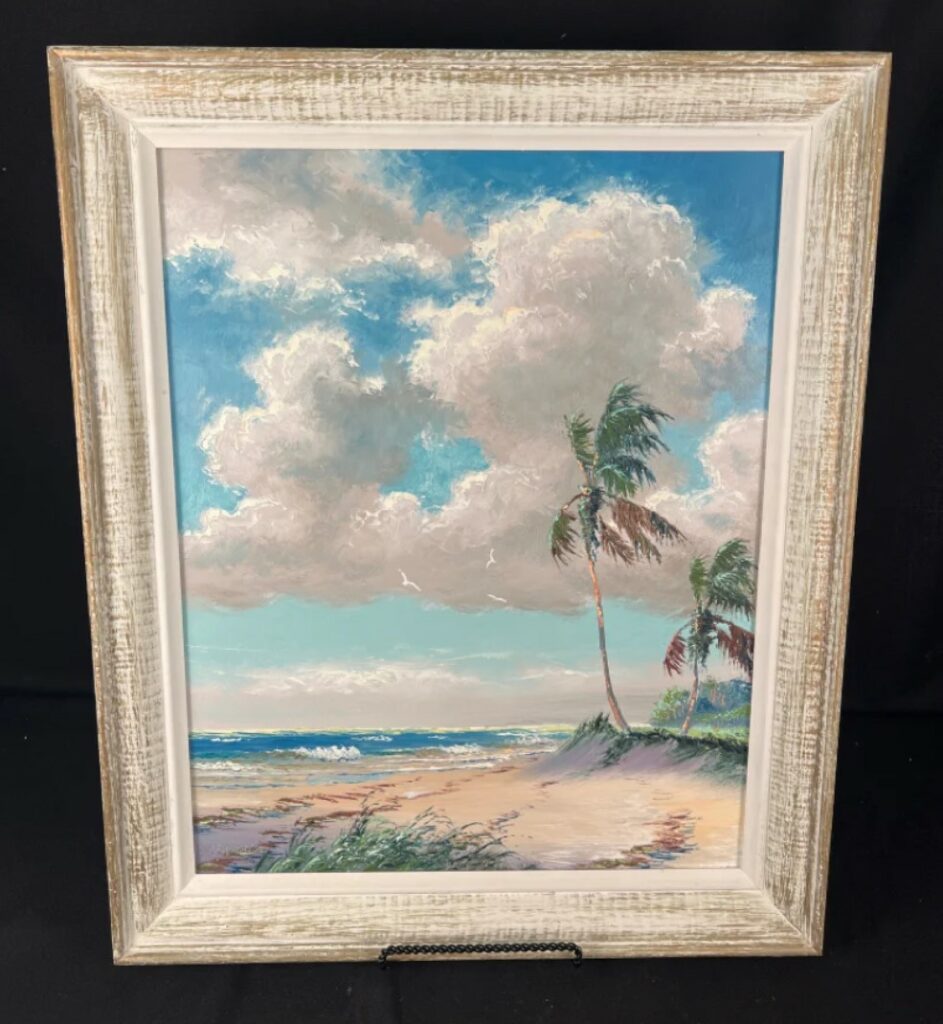Many Florida residents and visitors alike need to familiarize themselves with the artwork of the Highwaymen. The determination, talent, and vision of the Florida Highwaymen artists is an art form that is the essence of the American success story. This group of African American Artists from Central Florida specialized in landscapes that vividly captured the natural beauty of Florida. Beginning in the late 1950s, these folks would sell their artwork along the side of Florida roads literally out of the trunks of their cars. Hence evolved, the name Highwaymen.
Highwaymen art is now an American art genre with its place in the permanent collection of the Smithsonian Institution.
If you were poor, black, and with limited education, the still deeply segregated South of the mid-1950s offered little opportunity other than the work of a farm laborer. But a small group of 26 African-Americans wanted something else from life and turned their backs on the fields to earn a different living. The artists include Alfred Hair, Roy McLendon, Charles Walker, James Gibson, Al Black, and Sam Newton. Mary Ann Carroll is the only woman recognized as of the original Highwaymen artists.
The artwork of the Highwaymen featured broad sweeping strokes of color, and their rapid painting style captured an appealing illustration of Florida’s natural beauty. There was never the intention to depict in infinite detail the leaf of a palm tree, for example. Instead, each piece of art by each artist contributed to a collective vision of the subtropical paradise in which all the Highwaymen lived their lives, with most of the landscapes painted from memory.
Using repurposed supplies, these talented artisans sold their landscapes, with hand-made frames included, for $10 or less.
The paintings were done on inexpensive Upson board, typically used in roofing, and the frames were usually made from crown moldings often seen around windows and doors, which they painted white. The Highwaymen’s artwork was mass-produced and completed in under two hours per piece. The Highwaymen knew their art would never sell for a high dollar back then. Therefore, they decided to sell more artwork for less money per piece. Paintings were literally often sold before the paint was dry. The crown molding frames allowed still-wet pieces of artwork to stack atop one another without the pictures touching, which would have smeared the artwork’s wet paint.
Now that Florida’s landscapes have changed rapidly at the hand of urban development, the landscapes by Highwaymen are more valuable with each passing day.
Authentic Highwaymen art is now a highly sought-after, unique realm of Americana folk art, prized by avid collectors worldwide. Dunn’s Attic is proud to announce that we have Highwaymen artwork in Ormond Beach. At Dunn’s Attic, we pride ourselves on offering hard-to-find “one-of-a-kind” items for the home to the public. The painting of the Highwaymen proudly continues this legacy.

